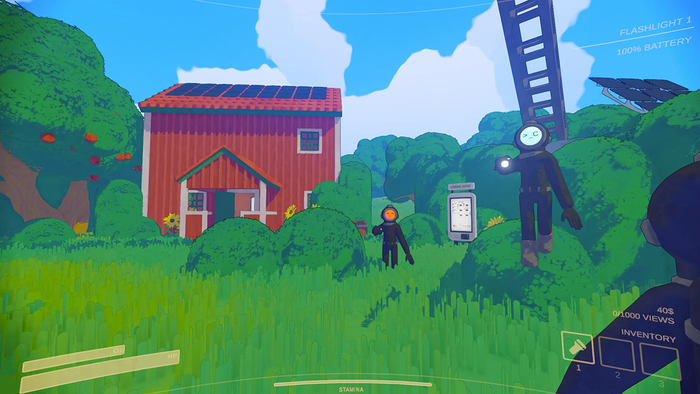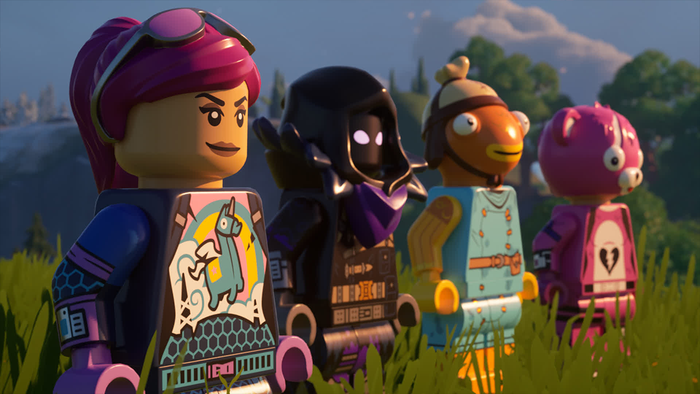In highlights from Game Developer magazine's postmortem of Gearbox's post-apocalyptic RPG-shooter Borderlands, the creators reveal how they overcame 'analysis paralysis' and revamped its art style.
February 15, 2010

Author: by Staff
The latest issue of Gamasutra sister publication Game Developer magazine, available for subscribers and for digital purchase now, includes a postmortem of Gearbox's Borderlands, written by the studio's product development VP Aaron Thibault. Borderlands, a first-person shooter heavily based around Diablo-like loot and level mechanics, is the latest new property from the Plano, Texas-based developer. It was published by 2K Games for PC, Xbox 360, and PlayStation 3 last October. These excerpts from the February 2010 issue of Game Developer magazine reveal various "What Went Right" and "What Went Wrong" highlights from throughout the creation of the game, revealing how the company employed a new art style and overcome scheduling issues and "analysis paralysis." Analysis Paralysis and the Truth Early design management decisions left the Gearbox team with less than a firm handle on the state of design at any given moment, and the impact of particular design implementations on the final game. It wasn't until a more objective system was implemented that the whole thing came together: "The initial core team started the project with very high-level goals and understandably blue sky thinking. The team decided at that point the most efficient tool for documentation and communication would be a wiki. That didn’t work out as the team began to scale. Designs evolved faster than the wiki pages that described them, and discipline was inconsistent throughout the team in terms of keeping things updated. "Down the road, this led to difficulty recalling why certain decisions had been made, and what was on the table for discussion or change versus what the team didn’t want to revisit until they were implemented at a state where they could be tested and analyzed. "There were times early in development when a team member would implement things that weren’t documented at all, which led to confusion about the actual state of some features and content. The desired end state for some things was not fully articulated, and when that combined with disagreements or lack of recollection about how they attained their present state, there would be meetings where many things were discussed but no decisions were made. "There would also be disagreements about what the customer would think about the item at hand and what the team should do next. The project’s director had been seeking a solution that would involve focus testing to bring the customer’s perspective into play when decisions about iteration were being made. He saw a lot of promise in this idea after 2K set up a customer play test with an offsite third party testing service that provided some eye opening results. At the time we made The Change, we decided to commit to focus testing specific features with representative customers. "Gearbox’s technical director got involved and the Truth Team was born. He intended this group to speak for the customer and to speak through data, not opinions or conjecture. Truth turned out to be one of our very best decisions, and we are now utilizing the strength of that team across all our projects." The New Art Style Along with numerous other aspects of development, at a certain point Gearbox completely reevaluated the game's art direction. This is how the team did it, using the initial town "Fyrestone" as a proof of concept: "Not long after the Fyrestone test was completed, Randy Pitchford took this example to 2K to pitch The Change. This was a risky prospect, and we had no idea how 2K would respond. Internally, we knew what kind of risk this posed to production. "There were a lot of influential people, Randy at the top of that list, who thought it was probably a very bad idea to open the door to that level of change so late in the project. But everyone who saw it recognized its potential, and almost everyone had a strongly positive reaction to it, especially when they saw it working in game and could navigate a space with the style implemented. "Fyrestone served exactly that purpose. When Randy made the trip to 2K in San Francisco to pitch it, they decided to make the bet on it with us and embrace the new style. That helped cement our productive relationship with them, and was a great catalyst to get us to focus together on how to mobilize to ship later that year. "With the new art style, everything started to fit together. We had art that matched the evolving attitude of the game. It was now fine for players to jump high up in the air, for enemies to take varying amounts of damage based on level, for missions objectives to be zany, for psycho midgets to run at you, for brains to pop out of heads intact and fall on the ground, and for a wisecracking unicyclebot to show up in the game as your guide. "The Visual Design Team described it as "ill-mannered whimsy" and the project’s director, Matt Armstrong, promoted the notion that our attitude should take inspiration from Paul Verhoeven, director of Starship Troopers and RoboCop—movies where over the top violence takes on its own brand of dark humor. It was now okay for things in the world to be humorous, whereas with the previous realistic style, the team was shooting for designs that played as "serious business." "The new feel was something that the entire content team could get behind. Productivity shot through the roof. We got into a magical cycle of art inspiring design inspiring art. "The new style brought with it an added, very practical benefit -- the process for creating assets could be clearly specified and a state of completion could be articulated and evaluated by the art leads. When we were going for a more realistic style, very often it was unclear if assets were done. "With the new style, there was no doubt. There was also room for iterating efficiency and quality within the new style. We had one particular member of the art team with a background in comic book art who set the benchmark for quality that the rest of the team constantly shot for; and just as they were hitting it, he leveled up the quality of his work with new techniques. "For example, in experimenting with being more efficient and increasing texture quality, he showed that "color up" is better than "ink down" for our style—a very different way of approaching art than game artists are used to. In your typical next-gen art workflow, artists bake normals and AO, then use those maps as a guide to color in the texture. "In our new style, most assets don’t need a normal map because we ink in the details—similar to graphic novel illustration. Fortunately, we had expertise on the team to help us understand the best way to execute and scale into full production. A constant process of improvement began, and it included all of our artists, our very small number of trusted outsourcing partners, and our art directors. This was a great art team motivator." The Quest for Missions Unlike with most first-person shooters, which tend to be more guided in their linearity and repetitive in mechanics, the mission system in Borderlands required more consideration, as this extract from the length, useful postmortem explains: "After The Change, the level design department was given the task of designing and implementing all the missions for the game. This was no small feat. From The Change through to the ship date, the level designers understood what would be required; with leadership from the level design lead they stood together, prepared to put forth amazing effort and in the end delivered a completely rebuilt game. "They had a high level mission framework for the game that was finalized at the very start of 2009. This framework built confidence that they would be able to implement objectives without fear that the story—and therefore missions—would change, as had been a previous concern—and this served to un-stick layout of the full game. They put on their mission designer hats and began building and testing small mission submaps that they would then propagate throughout the game. "The missions system itself evolved from a specification that the game design team wrote early in the project. Throughout preproduction, we were searching for how the game should be constructed and were looking for examples of fun missions with interesting variety. "From 2006 through the end of 2008, the team was driven by short term deadlines for demos, so from a mission design perspective we were always constrained by what would be appropriate for short, focused play experiences that could be developed by a small core team in about a six month cycle. As we later discovered, Borderlands is a game that needs a longer outlook to be truly appreciated. "Once we had a final narrative structure in place, the team was able to think about the big picture. That led to lots of new ideas about how missions could be fun, which in turn led to many support requests to extend the system. By that time, the system had gone through several revisions but had never been refactored to be easy to use for the kinds of missions that were taking shape as fun. "In the end, there was one individual on the team who took it on himself to learn the intricacies of the system as it stood, and he became the main expert and go-to guy for implementing and debugging missions. "The system was implemented to make use of our data driven interactive object system and took shape as a custom scripting solution outside of Kismet (Unreal Engine’s visual scripting interface), which was difficult to extend in all the ways our level designers requested, especially given how late in the project we finally understood what a Borderlands mission should be. As we took on ship mentality, new feature requests were made lower priority. "On one hand, the constraints made designers focus on doing the best with what they had, and that was helpful for getting the team focused on implementing the kinds of missions that the system would allow. On the other hand, we had only one person who really understood the system inside and out so his workload scaled up metrically, and the system’s implementation made missions hard to debug." Additional Info The full postmortem of Borderlands explores more of "What Went Right" and "What Went Wrong" during the course of the game's development, and is now available in the February 2010 issue of Game Developer magazine. The issue also includes a roundup of governmental game development incentives, Front Line Award finalists, a piece on the art of creating believably flawed characters, and our regular monthly columns on design, art, music, programming, and humor. Worldwide paper-based subscriptions to Game Developer magazine are currently available at the official magazine website, and the Game Developer Digital version of the issue is also now available, with the site offering six months' and a year's subscriptions, alongside access to back issues and PDF downloads of all issues, all for a reduced price. There is now also an opportunity to buy the digital version of this edition as a single issue.
You May Also Like






